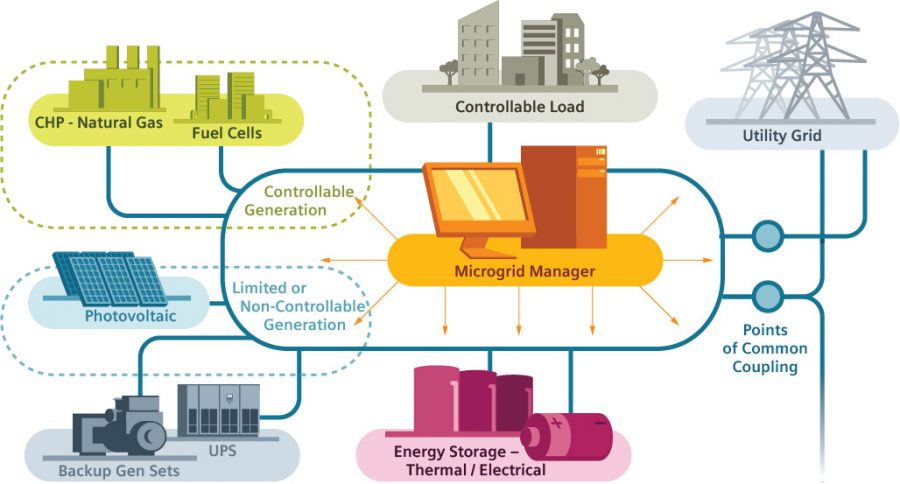What is a Microgrid?
Microgrids are relatively small, controllable power systems composed of one or more generation units connected to nearby users that can be operated with, or independently from, the local bulk (i.e. high-voltage) transmission system, sometimes referred to as the “macrogrid.” Since the energy (power and heat) are created close to where they are used, microgrids are a form of distributed generation.
Historically, microgrids generated power using fossil fuel-fired combined heat and power (CHP) and reciprocating engine generators. Today, however, projects are increasingly leveraging more sustainable resources like solar power and energy storage. Microgrids can run on renewables, natural gas-fueled combustion turbines, or emerging sources such as fuel cells or even small modular nuclear reactors, when they become commercially available.
They can power critical facilities after a weather- or security-related outage affects the broader grid. Microgrids can also be the main electricity source for a hospital, university, or neighborhood. While single-user and campus microgrids, such as those that serve an industrial site or military base, have existed for decades, many cities are now interested in systems that can better integrate generation resources and load, serve multiple users, and/or meet environmental or emergency response objectives.
Several variations (and combinations) of microgrids are possible:
- Number of customers: Microgrids can serve a single building, multiple customers in a limited geographic area, or customers across an entire community. Microgrids commonly range in size from 100 kilowatts (kW) to multiple megawatts (MW).
- Load types and functions: A general purpose microgrid provides or supplements the services customers might otherwise receive from the macrogrid. A “community microgrid” serves a public purpose, such as powering police and fire stations, cell towers, and pumping city water and wastewater during emergencies. Community microgrids can also serve general purpose needs by providing power to displace or supplement service from the macrogrid on a day-to-day basis.
- Connection type: An off-grid system does not connect to the macrogrid and thus must be a sufficient power source for its customer. A microgrid connected to a macrogrid has greater flexibility since the macrogrid functions as an additional resource.

